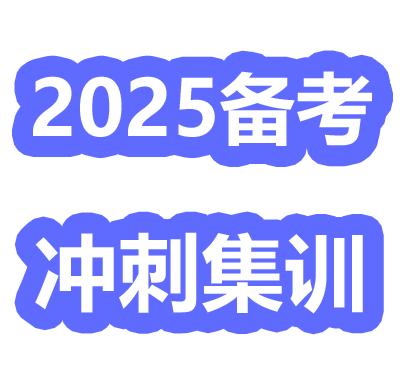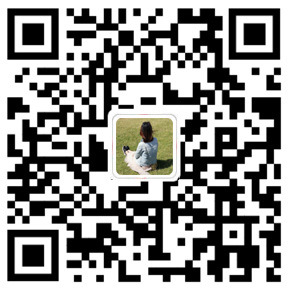
考研人數(shù)逐年增加,競(jìng)爭(zhēng)之激烈使得我們不得不加急復(fù)習(xí)的日程。眾所周知,閱讀理解占據(jù)了考研英語(yǔ)二100分試卷的一半分值,而考研英語(yǔ)閱讀文章大多來(lái)自英美國(guó)家的主流報(bào)刊雜志,所以如果能在日常就多多閱讀這些文章,對(duì)以后讀懂文章做對(duì)題目來(lái)說(shuō)會(huì)大有裨益。
學(xué)習(xí)步驟如下:
1.不看漢語(yǔ)譯文自己看一遍短文做理解
2.看漢語(yǔ)譯文比對(duì)自己理解的意思與之出入
3.強(qiáng)化記憶重點(diǎn)單詞(以記憶其漢語(yǔ)意思為主)
I had not realized how profoundly marketing trends dictated our perception of what is natural to kids, including our core beliefs about their psychological development. Take the toddler. I assumed that phase was something experts developed after years of research into children’s behavior: wrong. Turns out, according to Daniel Cook, a historian of childhood consumerism, it was popularized as a marketing trick by clothing manufacturers in the 1930s.
Trade publications counseled department stores that, in order to increase sales, they should create a “third stepping stone” between infant wear and older kids’ clothes. It was only after “toddler” became a common shoppers’ term that it evolved into a broadly accepted developmental stage. Splitting kids, or adults, into ever-tinier categories has proved a sure-fire way to boost profits. And one of the easiest ways to segment a market is to magnify gender differences—or invent them where they did not previously exist.
短文翻譯
我之前未意識(shí)到,市場(chǎng)趨勢(shì)是如何深刻地影響了我們對(duì)孩子天性的看法,包括我們對(duì)他們心理發(fā)展的核心理念。以學(xué)步兒童為例,我曾認(rèn)為這個(gè)階段是專家們經(jīng)過(guò)多年對(duì)兒童行為的研究得出的結(jié)論,但是我錯(cuò)了。研究?jī)和M(fèi)主義的歷史學(xué)家丹尼爾·庫(kù)克表示,事實(shí)證明,20世紀(jì)30年代,服裝制造商將其作為一種營(yíng)銷手段推廣開來(lái)。
商業(yè)出版物向百貨公司提議,為了增加銷量,它們應(yīng)在嬰兒服裝和大齡兒童服裝之間開辟“第三階段”。直到“學(xué)步兒童”成為一個(gè)常見的購(gòu)物術(shù)語(yǔ)后,它才發(fā)展成為一個(gè)被廣泛接受的兒童成長(zhǎng)階段。事實(shí)證明,細(xì)分兒童或成人群體是提高利潤(rùn)的可靠方法。細(xì)分市場(chǎng)最簡(jiǎn)單的方法之一就是放大性別差異,或者創(chuàng)造出原本不存在的差異。
真題練習(xí)
*一定要做題哦
28. The author suggests that our perception of children’s psychological development was much influenced by_____.
[A] the marketing of products for children
[B] the observation of children’s nature
[C] researches into children’s behaviour
[D] studies of childhood consumption
29. We may learn from paragraph 4 that department stores were advised to____.
[A] focus on infant wear and older kids’ clothes
[B] attach equal importance to different genders
[C] classify consumers into smaller groups
[D] create some common shoppers’ terms
30. It can be concluded that girls’ attraction to pink seems to be____.
[A] clearly explained by their inborn tendency
[B] fully understood by clothing manufacturers
[C] mainly imposed by profit-driven businessmen
[D] well interpreted by psychological experts
題目解析
28.【解析】根據(jù)題干,首先定位到第三段。該段第一句話“I had not realized how profoundly marketing trends dictated our perception of what is natural to kids, including our core beliefs about their psychological development.”指出:我沒(méi)有意識(shí)到,我們對(duì)孩子們天性的看法深受營(yíng)銷趨勢(shì)的支配,包括我們對(duì)他們心理發(fā)展的核心信念。接下來(lái)作者通過(guò)一個(gè)例子證明這一事實(shí),暗示了市場(chǎng)營(yíng)銷影響我們的看法,由此確定選項(xiàng)A為正確答案,同時(shí)排除選項(xiàng)B。原文有提到“研究”,但作者最后發(fā)現(xiàn)還是生產(chǎn)商的營(yíng)銷技巧。C,D項(xiàng)均為干擾項(xiàng)。
29.【解析】根據(jù)題干,首先定位到第四段。該段首句提到,貿(mào)易刊物建議百貨商店:要增加銷路就應(yīng)該在嬰兒服裝和稍大的一些孩子的服裝之間開創(chuàng)“第三個(gè)跳板”。接下來(lái)在第三句作者又指出,將小孩或者成人分成更小的類別已被證明是提高利潤(rùn)的絕佳方法,所以選項(xiàng)C為正確答案,同時(shí)排除選項(xiàng)A。本段并未談及對(duì)于不同性別的人群給予同樣的重視,因此排除選項(xiàng)B。第二句中“常見的購(gòu)物者術(shù)語(yǔ)”指的是通過(guò)這些術(shù)語(yǔ)帶領(lǐng)消費(fèi)者繼續(xù)給小孩分類分層,D選項(xiàng)屬于未貼合文段主旨的錯(cuò)誤。
30.【解析】第二段最后一句話談到,當(dāng)年齡增大和性別差異成為兒童市場(chǎng)的主要營(yíng)銷策略時(shí),粉色才完全被人所認(rèn)識(shí)。緊接著第三段又談到市場(chǎng)營(yíng)銷以及服裝制造商對(duì)我們看法的影響,由此推出選項(xiàng)C為正確答案。同時(shí)排除選項(xiàng)B。第二段第一句提到女孩對(duì)于粉色的關(guān)注似乎就蘊(yùn)藏在她們的基因里,但是根據(jù)《美國(guó)研究》的一位副教授喬·帕雷提所說(shuō),情況并不是這樣,所以排除選項(xiàng)A。第三段第二句提到作者本以為“蹣跚學(xué)步的兒童”這個(gè)階段是專家經(jīng)過(guò)多年研究?jī)和男袨椴虐l(fā)現(xiàn)的,但后來(lái)發(fā)現(xiàn)他這一認(rèn)識(shí)錯(cuò)了,沒(méi)有說(shuō)專家解釋得很好,因此排除選項(xiàng)D。





